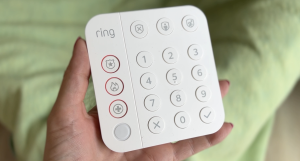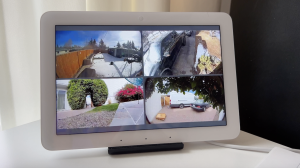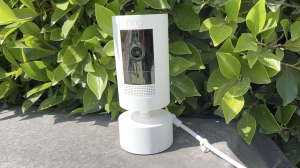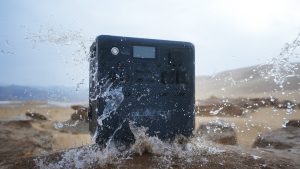There are a few things in tech that rivals the public anticipation for every new iteration of the iOS. So, when iOS 17 was released in 2023, a lot of people got a glimpse of some of Apple’s newest software enhancements to the ever popular iPhone. And among the new features, NameDrop was probably the flashiest.
Essentially, it’s like AirDrop got a social butterfly sibling. Instead of files, you’re swapping ‘hellos’, ‘nice to meet you’s, and all the essentials to keep the conversation going long after you part ways.
What’s Apple NameDrop?
Apple has decided to sprinkle a little of its Cupertino magic onto our social lives with Name Drop. It’s a contact exchange feature that lets you easily give out your details by simply tapping two iOS 17 equipped devices together.
If enabled, you can select the details you’re comfortable with sharing – like your name, number, and email. And then, with the other person’s consent, of course, gently ‘drop’ that information into their Contacts. They also have the option to send over contact to you as well. No more scrambling for a pen or awkwardly spelling out your email in a noisy cafe.
How it works
Like most Apple features, convenience is the name of the game with NameDrop. If you have it turned on, you simply need to do the following to instantly share your contact information:
- Unlock your iPhone.
- Place the top end of your phone next to the phone you want to share contacts with.
- Then, the NameDrop animation goes on and you can choose whether to Receive Only or Share your contact information with the other phone.
Is it too easy for its own good?
While it’s a welcome new feature for a lot of people, especially those of us with wide professional and personal networks, there are still some potential concerns. There’s that perennial question about privacy. Would we be comfortable knowing our details could be ‘dropped’ so easily?
Would people misuse it? An iPhone left unattended on a bar counter, for example, is susceptible to bad actors siphoning off the owner’s contact information.
It was a valid concern that even got the attention of law enforcement agencies citing the ease of contact sharing as a possible breach of privacy especially for young people and the elderly.
Fortunately, Apple heard these concerns and patched NameDrop in iOS 17.2 to only work if both iPhones are unlocked. This would prevent contact sharing without the consent of the phone’s owner. However, bad actors can still find workarounds to this safety feature, so it’s still advised to remain vigilant of your phone’s whereabouts at all times.
How to turn NameDrop on or off?
NameDrop is switched on by default on iPhones so if you’re worried about your privacy you can turn it off by following these steps:
- Go to the Utilities page on your App Library.
- Tap on Settings.
- Then, click on General.
- Click on AirDrop.
- Then, toggle off the Bringing Devices Together setting.
- To re-enable NameDrop, just toggle this setting back on.




The iPhone 15 is available at Best Buy.
**A note about Affiliate Links: TechGadgetsCanada & TechGadgetsInternational is supported by our readers. Occasionally I will include affiliate links in my reviews. I do this partly for convenience of the reader (since I’ll almost always include a link to the company website or similar anyway) in case you want to read more or purchase, but I also may get a small commission from the click, which helps me keep the blog running. If you choose to use this link I thank you greatly for supporting the blog. There’s no obligation or cost to you for using these links. As an Amazon Associate I earn from qualifying purchases.







